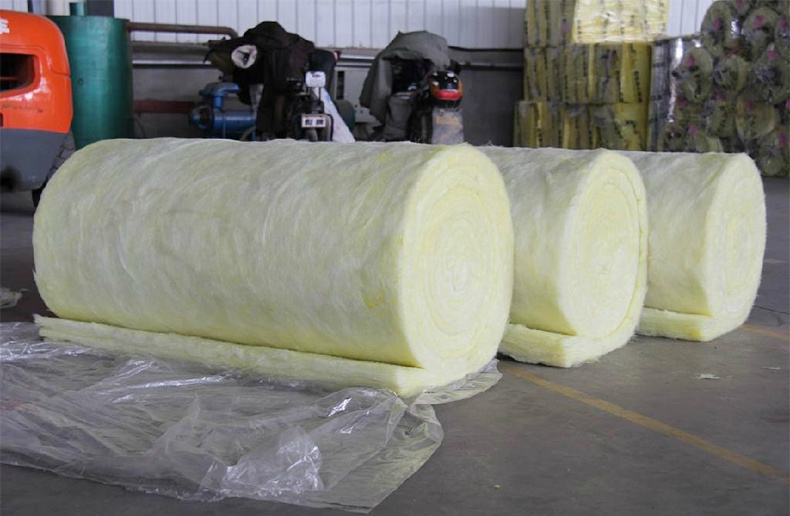Transform Your Roof with 75mm Glass Wool Blanket Insulation: The Ultimate Guide to Energy Efficiency
Jun 01,2025

Transform Your Roof with 75mm Glass Wool Blanket Insulation
Introduction to Glass Wool Blanket Insulation
Glass wool blanket insulation is a revolutionary building material that has become increasingly popular in recent years. Renowned for its excellent thermal performance and soundproofing qualities, this material is made from finely spun glass fibers. When applied as a blanket, it offers an effective solution for insulating rooftops, resulting in significant energy savings and enhanced comfort.
Why Choose 75mm Thickness for Your Roof?
Opting for **75mm glass wool blanket insulation** provides numerous advantages over thinner options. The increased thickness enhances thermal resistance (R-value), making it an ideal choice for environments with extreme temperatures. This thickness also helps in minimizing heat loss during winter and keeping homes cool during summer.
The Science Behind Insulation R-Values
The R-value measures a material's thermal resistance. A higher R-value indicates better insulation performance. **75mm glass wool insulation** typically boasts an R-value of around 2.5 to 3.0, depending on factors like density and installation quality. This makes it a superior choice for **energy-efficient roofing solutions**.
Key Benefits of 75mm Glass Wool Blanket Insulation
Let’s delve deeper into the advantages of using 75mm glass wool blanket insulation for your roof.
1. Enhanced Energy Efficiency
One of the primary benefits of installing 75mm glass wool blanket insulation is the substantial **energy savings** it can provide. By reducing heat transfer, insulated roofs can help lower heating and cooling costs, making your home more energy-efficient.
2. Noise Reduction
In addition to thermal insulation, glass wool also offers excellent sound-dampening properties. The fibrous structure absorbs sound waves, providing a quieter living environment. This is especially vital in urban settings where external noise can disrupt daily life.
3. Moisture Control
Glass wool is inherently resistant to moisture, preventing mold and mildew growth. This quality is crucial for maintaining a healthy indoor environment. Properly installed glass wool insulation ensures that moisture is managed effectively, prolonging the lifespan of your roof.
4. Fire Resistance
Safety is paramount when selecting building materials. Glass wool is non-combustible, meaning it does not burn or release toxic fumes when exposed to fire. This reduces fire hazards and enhances the safety of your home.
5. Environmentally Friendly
Manufacturing glass wool insulation often utilizes recycled glass, making it a sustainable choice. Additionally, its energy-saving capabilities contribute to a reduced carbon footprint over time.
Installation Process of 75mm Glass Wool Blanket Insulation
To ensure that you reap all the benefits of this insulation, proper installation is critical.
Step 1: Preparation
Begin by ensuring your roof structure is sound. Remove any debris, old insulation, or damaged roofing materials. This will ensure a clean, effective installation.
Step 2: Measure and Cut
Measure the areas to be insulated accurately. Use a sharp utility knife to cut the glass wool blanket to size. Always wear protective gear, such as gloves and masks, to avoid irritation from glass fibers.
Step 3: Install the Insulation
Lay the cut glass wool blanket between the roof beams, ensuring a snug fit without compressing the material. Compression can reduce the insulation's effectiveness.
Step 4: Seal Gaps
After installing the insulation, seal any gaps using appropriate materials to prevent air leakage. Use tape or sealants designed for insulation applications.
Step 5: Finish the Roof
Once the insulation is in place, you can proceed with the roofing material installation. Ensure that the roof is ventilated properly to enhance the performance of the insulation.
Maintenance Tips for Longevity
To maximize the lifespan of your **75mm glass wool blanket insulation**, follow these maintenance tips:
1. Regular Inspections
Schedule periodic inspections of your roof and insulation. Look for signs of water damage, mold, or pest infestations that could compromise insulation integrity.
2. Ensure Proper Ventilation
Ensure your roof is adequately ventilated to prevent moisture buildup, which can lead to insulation degradation.
3. Address Damage Promptly
If you notice any damage or degradation, address these issues immediately to prevent further problems down the line.
Cost-Effectiveness of 75mm Glass Wool Blanket Insulation
Investing in **75mm glass wool blanket insulation** may seem costly upfront, but the long-term savings are substantial. Lower energy bills, increased home value, and reduced maintenance costs make it a wise choice.
Return on Investment (ROI)
Homeowners can expect a high ROI through energy savings, averaging 10-20% annually. Additionally, many regions offer incentives for energy-efficient upgrades, further offsetting installation costs.
Comparative Analysis: Glass Wool vs. Other Insulation Materials
Understanding how **glass wool** stands against other insulation materials can further validate your choice.
1. Fiberglass Insulation
While similar to glass wool, traditional fiberglass insulation can be less effective in noise reduction. Glass wool tends to provide better thermal performance and moisture resistance.
2. Spray Foam Insulation
Spray foam offers superior airtightness but can be more expensive. Glass wool provides a balance between cost and efficiency, making it a popular choice for many homeowners.
3. Cellulose Insulation
Cellulose is made from recycled paper and can be treated for fire resistance. However, it may settle over time, reducing its effectiveness. Glass wool remains stable over the long term.
FAQs About 75mm Glass Wool Blanket Insulation
1. How does glass wool insulation work?
Glass wool insulation works by trapping air between its fibers, significantly reducing heat transfer and improving thermal resistance.
2. Is glass wool insulation safe for my home?
Yes, glass wool is non-combustible and does not emit harmful gases, making it a safe choice for insulation.
3. Can I install glass wool insulation myself?
While DIY installation is possible, hiring a professional ensures optimal performance and adherence to safety standards.
4. How long does glass wool insulation last?
With proper installation and maintenance, glass wool insulation can last over 50 years.
5. Will glass wool insulation get wet?
Glass wool is moisture resistant, but if it becomes saturated, it may lose some effectiveness. Ensure proper roof drainage to avoid this.
Conclusion
Transforming your roof with **75mm glass wool blanket insulation** is not just a renovation; it's a commitment to energy efficiency, safety, and sustainability. By investing in this exceptional material, homeowners can enjoy a multitude of benefits, from reduced energy bills to improved comfort and soundproofing. With proper installation and maintenance, this insulation can last for decades, making it a wise investment for any discerning homeowner. Embrace the change and enjoy the long-term advantages of 75mm glass wool blanket insulation today!
Contact Us
Company:Sunjoy (Tianjin) Tecnology Go.,Ltd
General Manager: White Eric
Email: admin@sunjoy-rockwool.com
Wechat: +86 18002010981
Tel: +86 4009950775
Address: Room 1002, Juding Buliding, Jinnan District, Tianjin.china


